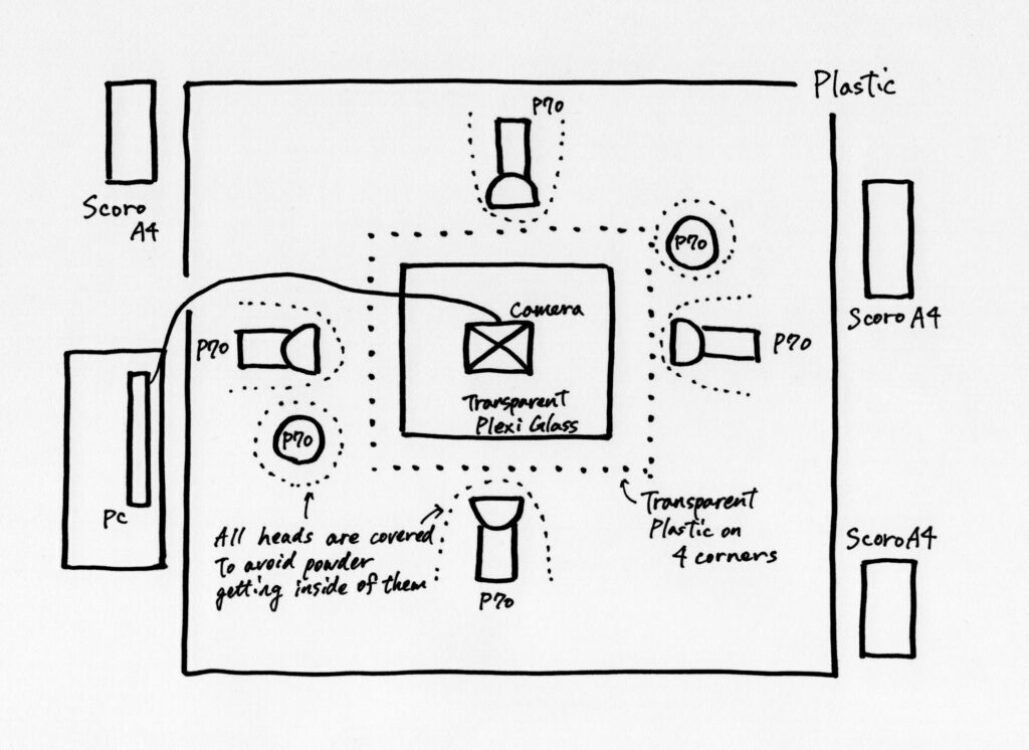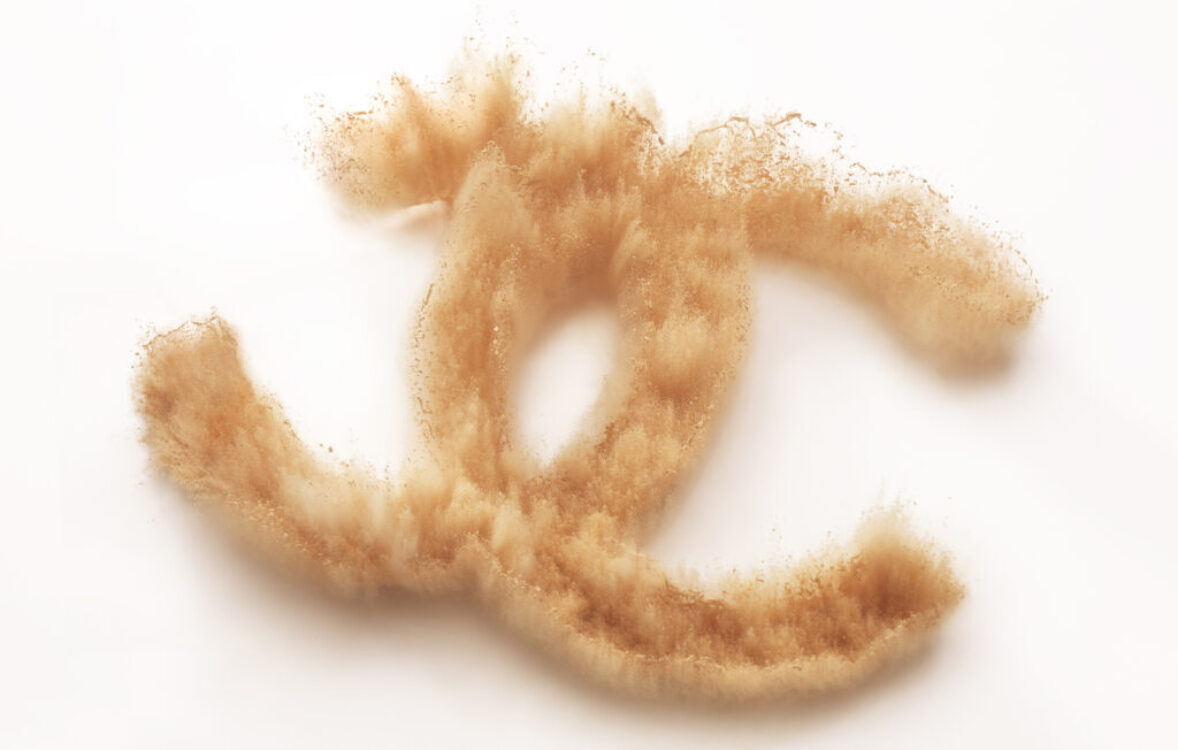
For every kind of cosmetic photography, subjects are very sensitive to lighting. This is one of the reasons why I love working with Broncolor. It’s the only brand that really allows you to make detailed adjustments to the light quality.
Cosmetic photography must tread a fine line between beauty and truth. After all, these are products that consumers apply to their faces. Consequently, I’m always looking for ways to bring a fresh angle and excitement to cosmetic photography, without ever losing sight of reality.
Cosmetic products have hundreds of different surface types, each of which reacts to light in very different ways. To me, this is the major difference between cosmetic photography and other genres. Choosing how to light a surface is like having a “conversation” with the product, and you need to listen very carefully to what its textures and surfaces have to say.

Powder Explosion
In the case of the «Powder Explosion», the “surface” was flying through the air at a rapid speed. This made it particularly interesting to photograph. However, the real challenge in producing these shots was to capture a moment that the human eye cannot see. Everything is over in less than a second. Yet within this already very brief time frame, you need to catch an even shorter moment. As this is beyond our physical abilities, I needed to include the help of technology. Powder explosions have been done by some truly great still life photographers over the years. However, I wanted to see if I could add my own special touch to the genre. So, after I had completed some regular explosions, I moved on to experimenting with brand logos. Overall I was pretty successful and happy with the results, but it took several months of research and development to pull it off.
Another obstacle was that I wanted to come up with a totally portable method of producing these shots. If the set-up was huge, too complicated, or required too specialized equipment, it would have been difficult to reproduce the technique anywhere other than in my studio in Tokyo. As it’s an effect that could potentially be applied to all kinds of products and clients, I wanted to be sure that I could easily deliver the same results again elsewhere too.

Planning, Setting and Equipment
I usually plan my shots very careful in advance, often making a sketch on a paper to organize my ideas and share them with the crew. In this case, we needed to be better prepared than ever before. Of course, the biggest logistical problem with blowing up powder is simply that it ends up going absolutely everywhere, and into everything. Needless to say, fine powder and photographic equipment are not a good combination. We had to cover the camera, lights, computer, walls, floor, and just about everything else in the studio. The area where the explosion took place was cordoned off with clear perspex, stopping the powder from flying out onto the camera and other equipment.
[TOP VIEW]

It’s also a good idea to isolate the wider shooting area from the rest of the studio using large sheets of plastic. At least in this way, the problem remains restricted to limited space. We kept the computer entirely outside of the shooting area, tethered to my Hasselblad by a firewire cable.
[SIDE VIEW]

Despite all these precautions, even once you take a shower and wash your entire body carefully, you will most likely find some color on a q-tip when cleaning your ears!
Aside from protecting the environment and equipment, photographing powder explosions also presents some other unique challenges. As mentioned above, the duration of the explosion is so short that, even if you have incredible reflexes, it would be almost impossible to capture the right moment just by triggering the shutter manually.

The solution was to hook up the Scoro to a sound sensor. The sound sensor triggers the Scoro with the sound of the explosion. It is possible to program a tiny fraction of delay (micro/nanoseconds) between the sound and trigger, in order to hit the ideal moment to capture. In this way, you can control how much you want the explosion to “bloom”. The fast t1 speed(1/7000) of Scoro freezes the blooming in the right moment.

Postscript
Recently, I’ve been working on cosmetic product movies, using LED lighting. LED lights are still on their way of development, and they often have problems with CRI and flickering. Broncolor’s new LEDs look very appealing to me because of their high CRI and flicker-free ability. I plan on trying them out very soon, hope it will be a great company to me, like their strobe lights have been.
About Hiro K.
Hiro K. is an award winning still life photographer shooting campaigns for international brands. He spends most of his time in the studio between Shanghai, Tokyo, Hong Kong, and Singapore and delivers stunning photographic visuals on a daily basis.
Hiro started his career in New York City, where he learned exceptional lighting skills to draw elegant lines by strobe lights. Now he resides in Japan, where he has sharpened his minimalistic approach towards photography. He expanded his career to the Asian region in 2012. Since 2014, Hiro has been represented by some of Asia’s leading photo agents and productions. His rapidly growing list of clients includes Estée Lauder, Lancôme, Clé de Peau Beauté, M.A.C Cosmetics, L’Oréal Paris, Shiseido, Clinique, Shu Uemura, Maybelline New York, Max Factor, Kose, Albion, Lux, Nivea, Kate Spade New York, United Colors Of Benetton, Suntory, Bacardi, Panasonic, Vogue Japan and many more.






